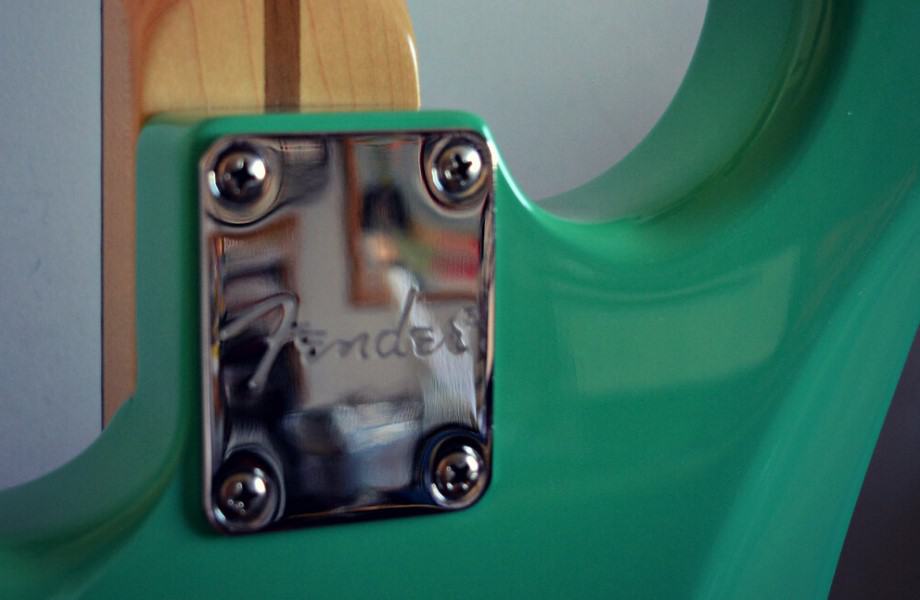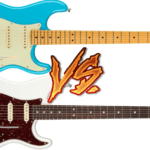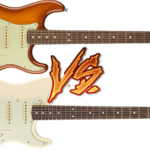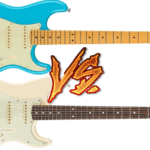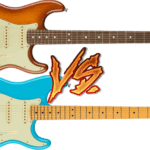If you are considering a new guitar or perhaps thinking of adding a vintage guitar to your collection, you may be curious if there is any reason to avoid the Fender Stratocasters with 3 neck bolts.
The 3 bolt neck joints on Stratocasters are most often associated with a period in Fender history when quality control wasn’t at its best. They are guilty by association. With vintage guitars, it may be best to avoid this style but that doesn’t mean it isn’t a viable way to secure the neck.
Bolt-on neck construction should rely on a properly cut neck and neck joint to ensure a snug fit.
So the bolts, which are actually wood screws, aren’t really going to compensate for a poorly made instrument no matter how many there are.
With set-neck guitars like Gibsons, the glue in the joint fills in the pores of the wood to ensure good contact between the neck and body. This close contact allows the guitar to resonate nicely.
Since bolt-on necks don’t have the advantage of the glue, the craftsmanship is crucial.
Vintage Fenders have 4 bolt neck joints
Leo Fender liked the idea of bolt-on necks because they made construction and repair much easier than guitars which use set necks.
The original Stratocasters starting in 1954 had 4 screws attaching the necks to the bodies. The screws are inserted through a metal neck plate that helps to distribute the pressure.
It’s probably best not to overthink the original decision to use 4 screws since one at each corner of the square neck plate just seems to make sense.
When did Fender start using 3 bolts on Stratocaster neck joints?
After Fender was sold to the CBS company the new ownership was looking for ways to reduce production costs. These included using polyester finish instead of nitrocellulose and using die-cast bridges and saddles.
Fender guitars made starting in the middle of 1971 featured the new 3 bolt construction. This was introduced along with a new technology called the Tilt Neck adjustment.
But there was no reason that the Tilt Neck mechanism couldn’t be installed with 4 or even 5 screws so some people believe that changing from 4 bolts to 3 was also a way of saving a few cents.
Why fix something if it isn’t broken?
When did Fender return to the 4 bolt neck joint?
The 3 bolt neck plate lasted for about 10 years but by mid-1981 Fender resumed using the 4 bolt option. Maybe they were trying to shed the bad reputation they had earned in the last decade.
So if you are shopping for a vintage guitar then think carefully when looking at Fenders made during 1971 – 1981.
However, Fender did release a model called “The Strat” in 1979 to celebrate the 25th anniversary of the Stratocaster. This particular model used 4 bolts since it was a tribute to the 1954 original.
Main differences between 3 and 4 bolt neck joints on Stratocasters
The necks on the 4 bolt guitars feature a square neck plate whereas the 3 bolt necks have a more triangular shape. So the neck plate is also smaller and the pressure is distributed over a smaller area.
The 1971 – 1981 Stratocasters also used the Tilt Neck invention (attached with small wood screws under the neck plate), which allowed for adjustment of the pitch of the neck via an Allen screw accessible through a small hole in the neck plate. This eliminated the need for shims under the neck.
Because of the Tilt Neck feature under the neck plate, one of the screws in the 3 bolt neck is actually a bolt and screws into the plate of the Tilt Neck disk. So the addition of the Tilt Neck was probably the real reason that Fender changed to 3 bolts.
Are 4 bolt joints actually better?
Most people prefer the 4 bolt design for Stratocasters because it was the traditional style and they feel it is more stable with the extra screw.
Some guitarists have complained that they are able to wiggle the neck on the vintage Strats with 3 bolts. But if the neck fits securely into the neck pocket there should be no room for movement.
Furthermore, Fender and G&L have both used the 3-bolt system in some of their Stratocasters and Telecasters since 1981. So I think it is safe to say that the precise cut of the neck pocket and neck is more important than the number of bolts.
Is there any reason to prefer 3 bolt neck joints?
There are a few arguments for using 3 neck bolts. Some people think that too many screws in the wood can weaken the wood or that more metal in the neck joint means less sustain since metal doesn’t have the same resonance as wood.
It could even be a question of aesthetics since the rounded edges of the triangular neck plate seem to match the curved contours of the Stratocaster body better than a square plate.
And of course, nostalgia is also a strong force in why people prefer certain instruments; if you learned to play on a 70s Strat or it was your first expensive guitar, it is natural to return to your roots.
Should you avoid getting a 3 bolt Strat?
There isn’t a definitive reason to choose a 4 bolt neck over a 3 bolt one but make sure that the neck doesn’t move and there are no gaps between the neck and neck pocket. For new guitars and reissues of 70s guitars that use 3 bolts, you are probably in the clear.
If you are trying to snag a real vintage guitar from the 70s, you will have to use your best judgment and do some research.
To be fair, just because some of the guitars during the decade when Fender used 3 bolts were poorly constructed doesn’t mean that they all were. But other issues from this period could include finish flaws, heavy wood used for the body, cheaper hardware, etc.
If you really have your heart set on a particular vintage Stratocaster and want to learn more about the defining specifications of different eras then The Fender Stratocaster by A. R. Duchossoir is a handy reference book. Good hunting!

Hello there, my name is Ramiro and I’ve been playing guitar for almost 20 years. I’m obsessed with everything gear-related and I thought it might be worth sharing it. From guitars, pedals, amps, and synths to studio gear and production tips, I hope you find what I post here useful, and I’ll try my best to keep it entertaining also.

